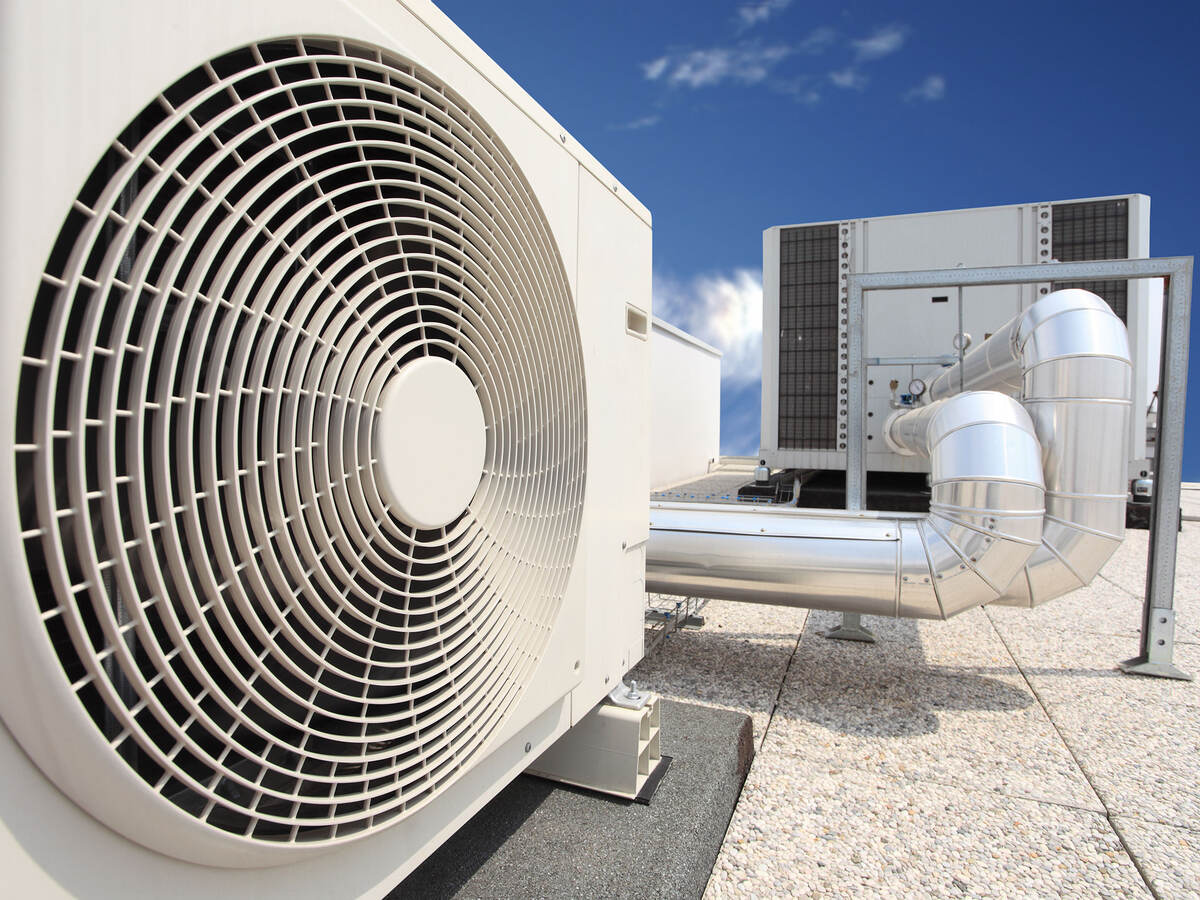June 5, 2024
Brian Rodgers, principal engineer, Appliances, HVAC and Lighting, Distinguished Member of Technical Staff, William Henry Merrill Society and John K. Taecker, senior regulatory engineer, Codes and Regulatory Services, Distinguished Member of Technical Staff, William Henry Merrill Society
Driven by environmental concerns, selecting refrigerants for heating, ventilation, air conditioning and refrigeration (HVAC/R) systems is rapidly evolving. Hydrofluorocarbons (HFCs) were originally introduced as a replacement for ozone-depleting chlorofluorocarbons (CFCs) and hydrochlorofluorocarbons (HCFCs). However, HFCs are greenhouse gases subject to restrictions in most countries. As a result, the industry has turned its attention to refrigerants with a low global warming potential (GWP).
Before 1990, most refrigerants were considered non-flammable. However, in the late 1980s and early 1990s, concerns about the ozone layer and the environment caused the industry to begin transitioning from traditional refrigerants toward lower-GWP alternatives, which tend to have higher flammability characteristics.
By 2010, increasing interest in refrigerants lower GWP, which are naturally more flammable, drove the need to develop safe use requirements in a wide range of HVAC/R products. In response, UL Solutions established a flammable refrigerant stakeholder task group to develop such requirements. This joint task group was primarily composed of technical experts from other UL Standards Technical Committees familiar with the process of revising UL Standards, along with other interested stakeholders knowledgeable on this subject matter.
Through the work of this task group, it is increasingly apparent that the risks associated with lower-GWP refrigerants require focused and thoughtful mitigation schemes to support their safe use. One such risk is flammability, as defined by ASHRAE 34 for Class 2L, 2 and 3 refrigerants.
ASHRAE 34, Designation and Safety Classification of Refrigerants, describes a shorthand way of naming refrigerants and assigns refrigerant safety group classifications to refrigerants based on toxicity and flammability data. The standard establishes the properties and the amount of flame propagation under specific conditions for Flammability Classifications 1, 2, 2L and 3.
|
Class description |
|
|
Properties |
|
|
Lower toxicity |
Higher toxicity |
|
|
Higher flammability |
A3 |
B3 |
Class 3 properties:
|
|
Flammable |
A2 |
B2 |
Class 2 properties:
|
|
Lower flammability |
A2L |
B2L |
Class 2L properties:
|
|
No flame propagation |
A1 |
B1 |
Class 1 properties: No flame propagation at 140°F (60°C) and 16.7 psi (101.3 kPa) |
ASHRAE 15, Safety Standard for Refrigeration Systems, establishes procedures for operating equipment and systems when using refrigerants. The current approach to limiting the hazards associated with Class 2L, 2 and 3 refrigerants in model codes and product safety standards is based on two main principles: limit the refrigerant charge (the amount of refrigerant permitted in the equipment) or detect and then ventilate the space when a leak has been detected (to stay below the LFL).
Based on over 14 years of research and standards development work, the current edition of ASHRAE 15 (published in June 2022) has been updated to include revisions for low-GWP refrigerants (A2L) for both direct and indirect systems. For UL 60335-2-40, the Standard for Household and Similar Electrical Appliances – Safety – Part 2-40: Particular Requirements for Electrical Heat Pumps, Air Conditioners and Dehumidifiers, the HVAC industry has been adapting safety requirements for flammable refrigerants since 2011.
This work has led to the 4th edition of UL 60335-2-40 (published in December 2022), which includes requirements for all flammable refrigerants up to three times the lower flammability limit (LFL) of A2 and A3 refrigerants in accordance with ASHRAE 34 and a maximum charge of 260 × LFL in accordance with UL60335-2-40. ASHRAE 15 allows up to 1,100 pounds of flammable refrigerant in machinery rooms or outdoors.
Some of the highlights of this updated UL Standard include:
- The Standard scope deals with the safety of electric heat pumps (including hot water heat pumps), air conditioners and dehumidifiers incorporating motor compressors, as well as without motor compressors. Hydronic fan coil units are also included.
- Products using flammable refrigerants must be constructed so that any leaked refrigerant will not flow or stagnate near ignition sources such as electrical components.
- Mitigation methods are required to prevent leaks and potential ignition of the refrigerant in the event of a leak.
- Enhanced requirements are applied to the refrigerant tubing, joints and fittings on equipment containing a flammable refrigerant to reduce potential sources of leaks by minimizing the number of joints and providing additional protection against physical damage.
- Any products using a flammable refrigerant other than a Class 2L must be factory-sealed. Factory-charged single package units and service ports are not permitted.
- No surfaces hotter than 700°C are allowed in an area that may be exposed to leakage of flammable refrigerants.
The charge limit of flammable refrigerant depends on the LFL of the refrigerant and the floor area of the room where the equipment is located. Suppose the refrigerant charge within a product is relatively small, such as that in a window air conditioner. In that case, the room can be relatively small, and no unique mitigation means are required. As the refrigerant charge increases, the room size must also increase. At some point, the refrigerant charge size may exceed the permitted room size; in this case, either a circulating fan within the product must operate continuously (typically not desired due to energy efficiency requirements), or a leak detection system is required. The leak detection system energizes the circulating fan within the equipment if a leak is detected. The system also turns off the compressor, closes safety shut-off valves and opens zoning dampers in ducted systems.
Closet installations or systems with larger charge limits also require natural and/or mechanical ventilation. A required leak detection system is considered a protective circuit and is evaluated based on requirements applicable to protective circuits.
Refrigerant leak detection systems are required to be located within the equipment where refrigerant is likely to stagnate. As a result of exhaustive research efforts, several new requirements have been added for refrigerant detection systems. The refrigerant detection system is evaluated specifically for the equipment using the specific refrigerant and is required to be configured such that a failure of the controls or sensor results in the circulation fans being turned on, safety shut-off valves being closed, dampers opened, and motor-compressor being de-energized. As the equipment size increases with a corresponding increase in the refrigerant charge amount for a given floor area, natural or mechanical ventilation of the room is required.
The UL Standards Technical Committee is currently working to update UL 60335-2-40 to include drift requirements that determine the end of life for sensors that detect refrigerant leakage within the equipment. Research conducted over the past 14 years supports this recommendation, which aligns with what is permitted in the new ASHRAE 15 2022 edition.
The following standards for refrigeration equipment are being updated, as applicable, to address the use of low-GWP refrigerants.
- UL 60335-2-24, the Standard for Household and Similar Electrical Appliances – Safety – Part 2-24: Particular Requirements for Refrigerating Appliances, Ice-Cream Appliances and Ice-Makers.
- UL 60335-2-89, the Standard for Safety for Household and Similar Electrical Appliances – Safety – Part 2-89: Particular Requirements for Commercial Refrigerating Appliances and Ice-Makers with an Incorporated or Remote Refrigerant Unit or Motor-Compressor.
Due to Environmental Protection Agency (EPA) sell-through dates and updates to the standards, UL 412, the Standard for Refrigeration Unit Coolers; UL 427, the Standard for Refrigerating Units; UL 471, the Standard for Commercial Refrigerators and Freezers; UL 474, the Standard for Dehumidifiers; UL 484, the Standard for Room Air Conditioners; and UL 1995, the Standard for Heating and Cooling Equipment, have all been sunset and replaced by either UL 60335-2-40 or UL 60335-2-89.
Both the International Mechanical Code and the Uniform Mechanical Code require self-contained, factory-built HVAC/R equipment and appliances to be listed and labeled in accordance with these Standards and installed in accordance with the listing and the manufacturer’s installation instructions. The following table identifies the standards for certifying this equipment and the UL product category designations.
|
Equipment |
Standards |
UL product category |
|
Air-conditioning equipment |
UL 1995 or UL/CSA 60335-2-40 |
KTFV and LZFE |
|
Commercial refrigerators, freezers, beverage coolers and walk-in coolers |
UL 471 or UL/CSA 60335-2-89 |
FDIT, LZFE, SFWY, SGKW, SQVQ and SQTV |
|
Dehumidifiers |
UL/CSA 60335-2-40 |
LZFE |
|
Drinking water coolers |
UL 399 |
SRJX |
|
Household refrigerators and freezers |
UL 60335-2-24 |
SHZZ |
|
Ice cream makers |
UL 621 |
SINX |
|
Ice makers |
UL 563 |
SJBV |
|
Packaged terminal air conditioners and heat pumps |
UL 484 or UL/CSA 60335-2-40 |
ACKZ |
|
Refrigerant-containing components and accessories |
UL 207 |
MJAT, SEHU, SEYW, SFJQ, SKXY, SLPR, SLSV, SMGT, SMUR, SNHZ, SNLT, SNOY, SNVX, SOJV, SOMU and SROT |
|
Refrigeration fittings, including press-connect, flared and threaded |
UL 109 and UL 207 |
SDTW |
|
Refrigerated vending machines |
UL 541 |
SQMX |
|
Refrigerating units and walk-in coolers |
UL 427 or UL 60335-2-89 |
LZFE, SQTV |
|
Split-system air conditioners and heat pumps |
UL 1995 or UL/CSA 60335-2-40 |
LZFE |
|
Unit coolers |
UL 412 or UL/CSA 60335-2-89 |
SPLR |
Find UL Certified products using the UL Product iQ® database at www.UL.com/PiQ. Access to Product iQ’s code authority features requires a simple one-time registration. Once registered, simply enter the four-digit UL product category in the search field for certified products and important guide information.
For more information related to these products or their certifications, please contact:
Brian Rodgers, UL Solutions principal engineer, HVAC, Brian.Rodgers@UL.com
John Taecker, UL Solutions senior regulatory engineer, John.K.Taecker@UL.com
Stay informed
Actionable insights on the topics you choose, delivered directly to your inbox.


